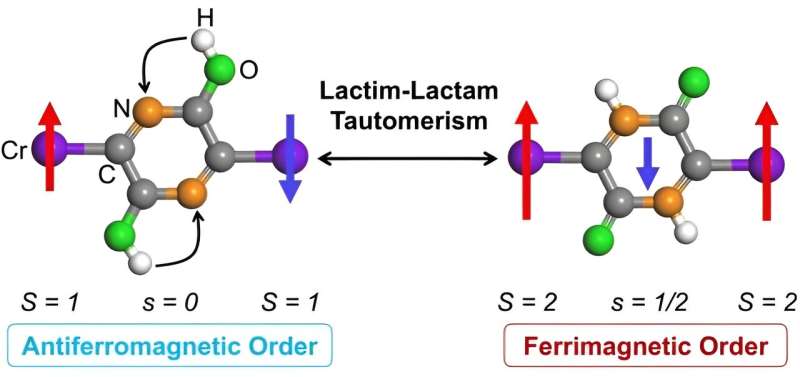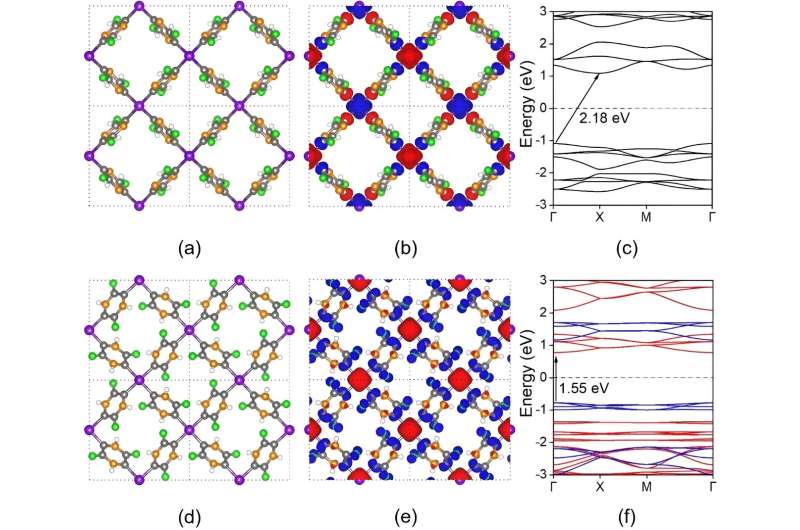This article has been reviewed according to Science X's editorial process and policies. Editors have highlighted the following attributes while ensuring the content's credibility:
fact-checked
peer-reviewed publication
proofread
Researchers achieve chemically controlled, reversible magnetic phase transition

A research team led by Associate Prof. Li Xingxing and Prof. Yang Jinlong from the University of Science and Technology of China (USTC) of the Chinese Academy of Sciences (CAS) has developed a groundbreaking chemical method for two-dimensional metal-organic lattices.
Their results were published in Nano Letters on Oct. 2nd.
In spintronics, it is paramount to develop an efficient way to reversibly control the spin order of materials. Though various physical methods have been proposed, chemically achieving this has posed significant challenges.
Researchers proposed the utilization of the well-recognized lactim−lactam tautomerization process to reversibly modulate the magnetic phase transition in two-dimensional (2D) organometallic lattices. This revelation offers novel pathways for controlling the electrical and magnetic characteristics of materials.
The spin state of an organic linkers undergoes a transformation from a singlet state to a doublet state due to the lactim−lactam tautomerization.
Using chemical means to control the spin state of materials has several potential advantages over physical methods. It can be done at room temperature, which makes it more practical for real-world applications. Additionally, chemical reactions can be precisely controlled, enabling more precise control over the spin state of materials.

In their study, the team used the compound called 2D organometallic lattices, which has a unique structure that allows its magnetic phase to be changed using the lactim-lactam tautomerization. Researchers demonstrated that this reaction could be used to reversibly switch the magnetic state of the material from antiferromagnetic to ferrimagnetic.
The team's findings pave the way for further research in this area. By exploring other chemical reactions that can influence the spin state of materials, it may be possible to develop even more advanced spintronic devices in the future.
More information: Junyao Li et al, Chemically Controlled Reversible Magnetic Phase Transition in Two-Dimensional Organometallic Lattices, Nano Letters (2023). DOI: 10.1021/acs.nanolett.3c03060
Journal information: Nano Letters
Provided by University of Science and Technology of China




















